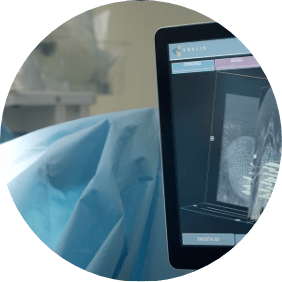UroLift
UroLift provides a simple solution to treat obstruction, freeing patients from ongoing BPH medication with rapid recovery.


What is UroLift?
Most men living with mild symptoms of enlarged prostate (BPH) take oral medication after diagnosis. However, these medications often do not provide adequate relief and can cause dizziness, fatigue and sexual dysfunction. Taking this medication does not have to become a lifelong burden for these patients with therapeutic alternatives such as the UroLift System.
Treatment with the UroLift® System provides rapid relief and recovery for men living with the symptoms of an enlarged prostate. Through the use of implants placed in the prostatic lobes, this therapy causes an unblocking of the lower urinary tract, pursuing two objectives: on the one hand, to relieve the symptomatology and, on the other hand, to slow down the progression of the disease and the appearance of associated complications.
The UroLift System has demonstrated a significant improvement in patients' quality of life compared to oral medication, being one of the safe and effective surgical procedures for BPH that does not cause erectile or ejaculatory dysfunction.
This treatment uses the pressure exerted by the implants placed in the transitional zone of the prostate to reduce the pressure it exerts on the urethra, favoring a wider channel for the evacuation of urine from the bladder. The treatment delivery device is introduced through the urethra and the implants are placed on the prostatic surface, with one end at the urethral level and the other at the level of the prostatic capsule. In this way, the obstructive prostatic lobe is compressed as if it were a staple. These implants are inserted in the prostatic tissue, in areas previously planned in an individualized manner.
The UroLift system comes to urology as an alternative treatment for patients with mild symptoms or initial stages who are candidates for medical treatment. In this sense, it becomes a potential alternative to medication, either by the patient's own decision, who does not want a treatment prescribed for years, or because of the side effects or drug interactions with their usual treatment that these may cause.
Therefore, UroLift is not a valid treatment for all patients with BPH but only for patients strictly selected on the basis of a series of personal, clinical and anatomical parameters (in all cases prostate size must be taken into account, being indicated for prostates no larger than 80cc). It is important, therefore, a complete evaluation by the urologist specializing in this therapy in order to decide whether it is the one that will provide the best results for the patient or whether, on the contrary, he should opt for other therapeutic alternatives.
- It does not cause erectile or ejaculatory dysfunction.
- It is minimally invasive.
- Minimum downtime.
- Long-lasting results.
- Rapid symptom relief and recovery.
- Significant improvement in quality of life.
- It is a procedure only valid in patients with a mild condition.
- As with any medical procedure, individual results may vary.
- The most common side effects are mild to moderate and include pain or burning with urination, blood in the urine, pelvic pain, urgent need to urinate and/or the inability to control the urge to urinate. Most of these side effects disappear within two to four weeks after the procedure.
Newsof ROC Clinic in UroLift
Research
Da Vinci and Hugo RAS Platforms for robot-assisted partial nephrectomy: a preliminary prospective comparative analysis of the outcomes.
They ask us in the Consultation
Is the UroLift System treatment painful? How long will it take to get back to my normal life?
In general, the UroLift System is a minimally invasive treatment that usually requires less recovery time than other procedures. This procedure can be performed under local or general anesthesia which usually helps to minimize discomfort during the procedure. However, each patient's pain or discomfort may vary.
Is medication needed during the recovery period of the UroLift treatment?
After treatment, patients usually return home the same day. Downtime after the procedure is minimal and many patients experience relief of symptoms in as little as two weeks. Patients may have some urinary discomfort during the recovery period. The most common side effects may include blood in the urine, some pain or discomfort during urination, an increased urge to go to the bathroom and pelvic discomfort that usually resolves within two to four weeks after the procedure.
Does UroLift treatment affect sexual function?
Clinical studies have shown that treatment with the UroLift System does not result in sustained new cases of erectile or ejaculatory dysfunction.
Is the UroLift System treatment permanent?
The implants are intended to be permanent, although, if necessary, the urethral implant can be removed.
Team of the UroLift unit
No professionals were found.


 +34 912 627 104
+34 912 627 104 Contact
Contact





